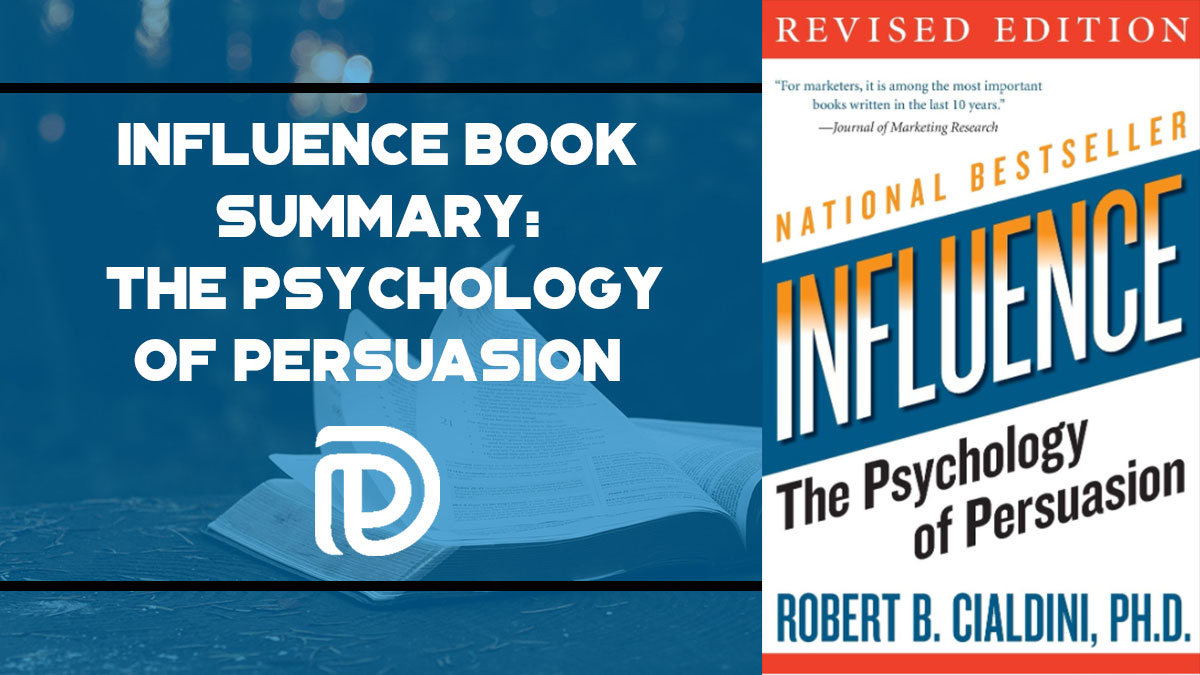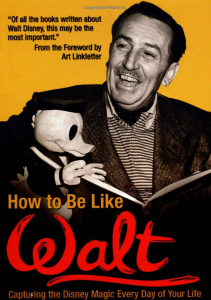If there’s one book that I’ve read that has helped me in ALL aspects of life (work, family and social), it would be Dr. Robert Cialdini’s Influence – The Psychology of Persuasion.
It’s also frequently mentioned on podcasts as being on the interviewers favorite books list.
There’s something about both psychology and negotiation that has always interested me.
Related article: When Negotiating, Never Split The Difference
The book shows the psychology behind why people say “yes” in everything from decision making to buying goods and services.
This can help those in sales no matter if you’re a car salesman or a plastic surgeon trying to sell a pair of, you know, whatever it is they sell. 🙂
Who Is Dr. Robert Cialdini?
Dr. Robert B. Cialdini is one of the top experts on the psychology of influence. He’s a university professor of Psychology and Marketing at Arizona State University.
He’s best known for performing “undercover” research for books such as:
In order to write Influence, he went “undercover” for three years to investigate how the principles of influence are used and applied by different advertisers and sales organizations.
He set out to observe real-life situations and if there were different ways to improve on the science of persuasion.
He found that in order to influence people, there were six main key principles of persuasion:
- reciprocity principle
- commitment and consistency principle
- social proof principle
- authority principle
- liking
- scarcity principle
Why Doctors Should Persuade Patients
As health care professionals, our job is to treat patients ethically and ONLY recommend the BEST options to cure/treat their problems.
I’ll admit growing up, I used to view a doctor as somewhat an authority figure. This was a profession that I very much looked up to and aspired to join at some point.
Once I completed training, I realized that many of the things that we’d been taught didn’t help us grow our practice.
A good example is one of the most sought out areas of dental continuing education that has to do with sales and marketing. Specifically, how to increase our success rate getting a patient to say “Yes” to treatment recommendations.
This was one of the biggest shocks transitioning from training where most patients said “yes” to private practice where we’re dealing with high price treatment and insurance.
In dental school and residency, treatment was either free or low cost. Out in the real world, things are much different which I never considered.
It never crossed my mind that I’d have to learn how to ethically influence people in order for them to schedule the treatment we were recommending. At first it angered me as I’d spent the last 8 years of training post college to learn a skill that relied on me to be able to influence someone.
I trained to be a doctor and NOT a salesman! Now that I’ve been practicing almost 20 years, I now understand this concept as humans are constantly bombarded with thousands of marketing messages daily. This makes many of them look for the best “deal” and not so much a higher quality of care.
I own a solo practice and success comes down to my leadership of employees and how well we treat our patients. Being an avid reader, many years ago I began the process of trying to find out how to best influence patients while still providing top notch care.
I began reading books about companies that are known for their customer service such as Disney and the Ritz Carlton.
Examples include:
- The New Gold Standard – The Ritz Carlton Company
- The Heart of Hospitality
- Be Our Guest
- How to Be Like Walt
- Inside the Magic Kingdom
And of course, Robert Cialdini’s Influence, which has been one of the keys to our practice’s success.
The book contains what he’s learned in years of research studying human behavior and the various ways that we’re susceptible to influence and persuasion (in both harmful and helpful ways).
Let’s take a look at each of the six…
Cialdini’s 6 Weapons Of Influence & Persuasion
#1 Reciprocity principle
When someone gives us something, we feel obliged to repay them back. It’s for this reason that people are more likely to say “Yes” to your request when you first give them a small gift or perform a small favor.
For those of you that are familiar with the movie “The Silence of the Lambs“, then you’ll remember the reciprocity principle well.
In the movie, FBI agent Clarice Starling spends her time trying to get Hannibal Lecter to help her solve a crime. During the interrogation, Hannibal states, “Quid pro quo Clarice” or one thing for another.
He’s implying that in exchange for information, he expected something from Clarice. He was using the rule of reciprocation.
Simply put, people are obliged to give back to others the form of a behavior, gift, or service that they have received first.
Another example from is when a Cornell professor, Dennis Regan, created a study to test reciprocity. He had participants enter a room one at a time and complete a questionnaire with a fake participant who was really the Professor’s assistant.
In the study, the assistant left during the middle of the experiment for half of the participants and returned with two soft drinks. One for each of them. He did NOT do this for the other half of the participants.
After the experiment, the group that received the soft drink bought twice the amount of raffle tickets he was selling versus the other group. This proves the power of the reciprocity principle.
Other examples of reciprocity include:
- Businesses such as Costco and Sam’s that give out free samples. I know that whenever I sample some of their sausage, whether I like it or not, I feel obligated to buy it.
- Back in the day, the Hare Krishna society would send their members to airports to hand out free flowers even though most people didn’t want them. But they were trained to never take them back which made people feel obligated to give a donation even if the gift was unwanted.
- Charities often include small gifts in their requests for donations. The Disabled American Veterans organization doubled the response rate of their mailers (from 18 to 35%) when they included free labels.
#2 Scarcity principle
Research shows that humans respond MORE to “fear of loss” than “gaining something“. I learned this concept shortly after practicing a few years. When patients would present with receding gum tissue needed a soft tissue graft, I went into my spiel about how we could build up (GAIN) their tissue.
But I started noticing that once I began telling them that they could lose ( LOSS) their teeth if this continued, they’d schedule treatment more frequently.
The next time you’re shopping on Amazon and Zappos, pay attention to see if they’re using this tactic. It’s amazing how no matter what pair of shoes I select, there ALWAYS tends to be “only 2 pair left!”
They get that consumers will buy items they’re researching NOW instead of leaving their site to price shop.
It’s a fact, when there’s less of something, we want it more.
Examples:
Companies will use “limited time offers” to make it appear products are in a short supply to increase buying frequency.
Car and furniture companies are some of the best persuaders of the world. They’re great at using “deadlines” to force consumers into buying. Examples include “Cyber Monday” and “24 or 48 only” sales.
#3 Authority principle
We’re taught in childhood that we should obey authority figures such as:
- parents
- teachers
- coaches
- policemen
- doctors
This carries over into adulthood where we continue to look up to and are influenced by recognized experts and officials.
We saw first hand during the 2020 pandemic that most humans are followers and were constantly looking for leaders to provide the best source of information.
Regarding business, if you have a well-defined niche, then it’s possible to become the authority in that niche (there’s riches in niches).
One of the key factors that has caused this site to grow is by providing quality content such as our Passive Income Guide. Anytime someone publishes a book or e-book, their credibility score rises putting them more in an authority position.
Common authority signals:
- Clothes. Whether we realize it or not, we judge a book by its cover. Regarding humans, that “cover” is by the clothes they wear. For example medical/pharmaceutical ads have been known to portray actors as a doctor. Even though they’re not medically trained, the white coat they wear subconsciously conveys that they’re a medical authority.
- Specialization. When I was in dental school, I realized that it was going to be tougher building a practice as a general dentist vs a specialist. In my area, there’s over 100 dentists but only a handful of specialists. People these days seek the advice and expertise of a specialist and tend to pay more for their products and services vs a generalist. Now that I’m investing heavily into passive real estate, I’ve hired a CPA that specializes in that area.
#4 Commitment and consistency principle
Cialdini’s fourth principle is Commitment and Consistency which has to do with a person’s self-image.
Being a “man of your word” is an attractive social trait to possess. It’s for this reason that most want to be seen as consistent in what they say they’re going to do.
An example in the book highlights a famous study done in the 1960s by psychologists Freedman and Frasier.
They found only a small number of people would be willing to erect a large, unsightly wooden sign in their front yard to support a Drive Safe campaign in their neighborhood.
However, only a few streets over in a similar neighborhood, there were four times as many homeowners that indicated they’d be willing to put it in their yard.
Why?
Because just two weeks earlier, they’d agreed (committed) to put a small 3-inch “Drive carefully” sticker in their front window showing their support for the campaign.
Little did the researchers know that small sign was the initial commitment that led to a 400% increase in a much bigger but still consistent change.
This principle is also used in:
- Weight loss clinics. The most successful clinics encourage clients to make a public commitment by sharing their goals with others. This helps them stay on track with their diet when willpower alone would have failed.
- Door-to-door sales. Companies that sell their products and services door-to-door are able to reduce refunds simply by having the customer fill out the sales agreement instead of the salesperson. Making this “commitment” reduced any future buyer’s remorse thus reducing refunds.
5) Liking
The fifth principle is Liking. This means that people are more likely to follow advice, buy a product or use services if they like you.
Many of the network marketing companies find their success due to this principle. They have clients sell their products to personal friends as they know that it’s much easier to say “no” to an anonymous salesperson than your friend.
Customer referrals are so effective due to the liking principle. A personal example was when our practice had some major computer problems. We contacted a friend that was knowledgeable with electronics and contacted the recommended person due to the trust I have with him.
Other factors that increase liking:
- Familiarity. Claimed to the the World’s Greatest Salesman Of All Time, Joe Girard said his secret was sending out greeting cards every month to thousands of his former customers. He knows that we tend to trust people the MORE familiar we are of them.
- Similarity. Like attracts like. We tend to like others who are like us. This is why salespeople often try to create rapport by finding any hobbies and interests they have in common with their prospect. On our Medical History sheet, we have patients fill out their interests. That way we can mention them initially during the consultation to build rapport.
6) Social proof principle
“Since 95 percent of the people are imitators and only 5 percent initiators, people are persuaded more by the actions of others than by any proof we can offer.” – Dr. Robert Cialdini
People will follow what they see others doing. If we see others taking a certain path, then we assume it’s right for us too.
An example can be seen when shopping online. If I’m searching to buy something on Amazon, such as a pair of hunting gloves, I’m more likely to buy the ones that have the most and best reviews. The more people that seem to like a product, the better we assume it is.
Our practice routinely uses social proof when patients are undecided about whether or not they should be sedated during treatment.
We say, “Mrs. Jones, most of our patients tell us that being sedated under these circumstances was the best thing that they have done in a long time.”
My staff knows that by using persuasion ethically, we can help patients overcome their fears and accept the recommended treatment.
Conclusion
Learning and using Cialdini’s principles provides a solid foundation for better understanding sales, marketing and persuasion in almost every situation.
Which of the six principles do you find most effective? Leave a comment below.
Don’t Miss Any Updates. Each week I’ll send you advice on how to reach financial independence with passive income from real estate.
Sign up for my newsletter






